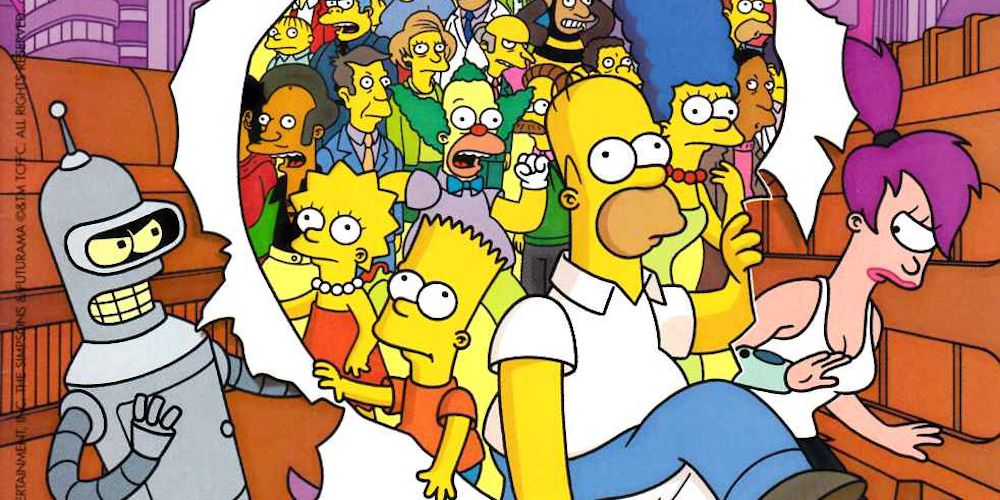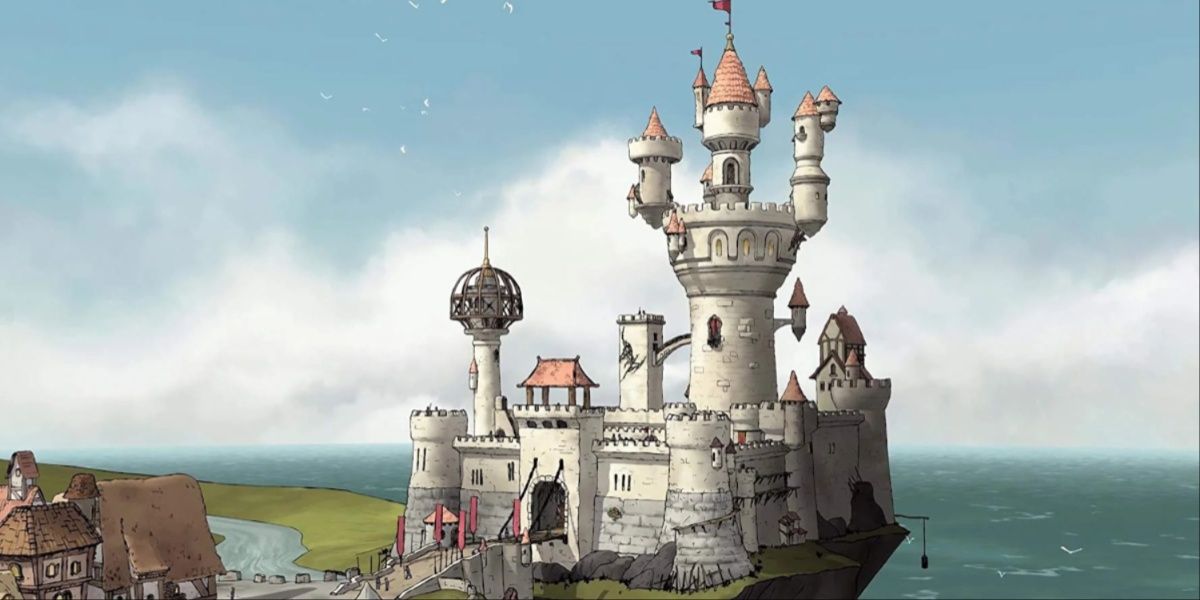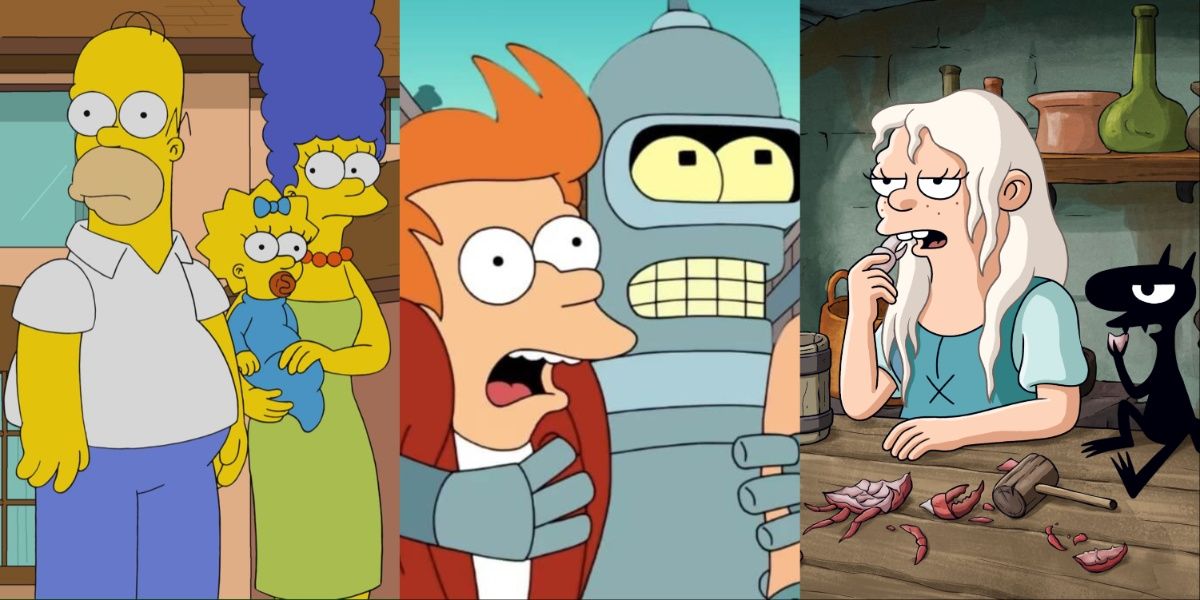What Futurama, Disenchantment and The Simpsons Do as a Trilogy
The Simpsons arguably started as a way to convey that era's American middle-class struggles and poke fun at their foibles, so there's a lot of emphasis on and scrutiny of modern-day politics and worker-employer relations. The show, since then, has morphed into a satirical and zany assessment of present-day society. Nonetheless, regardless of whether discussing the themes present within The Simpsons' "Golden Age" or later episodes, the show has always echoed the state of current events and pop culture. This is significant because the series effectively acts as a time capsule, capturing all the nuances of human existence from the late 1980s to now.
In a sense, Futurama and Disenchantment carry on that tradition, albeit from a different, speculative point of view.
How The Simpsons, Futurama and Disenchantment Work as a Trilogy
Futurama, The Simpsons, and Disenchantment are great separately, but the ties that bind them turn the series into a trilogy that works well together.

Summary
- The Simpsons and Futurama crossover episode establishes that both series exist within the same universe.
- Disenchantment also linked Bean's world and the one depicted within Futurama because of Professor Farnsworth and his time machine.
- Because of the connections between Futurama, The Simpsons and Disenchantment, the three series can be viewed as a working trilogy that examines and theorizes on the history of humanity.
Regarding cherished animated series, Matt Groening seems to have his fingers on the pulse concerning what audiences want to watch. After all, the cartoonist and animator has three distinct shows -- The Simpsons, Futurama and Disenchantment -- which have all done well over the years despite their ups and downs. Nevertheless, fans have always viewed each sitcom as a standalone piece regardless of crossovers or Easter eggs, which shouldn't be the case. These connections, in all actuality, bind the three series in a unique way that not only ties their worlds together but also incidentally allows them to act as a working trilogy.
The idea, while farfetched on the surface, functions quite well because it adds an overarching theme that spans across each series -- one that explores and poses conjectures on the misadventures of humanity through history. This thought, naturally, presents a chronological dilemma because if The Simpsons, Futurama and Disenchantment are meant to be watched as a trio, then in which order should they be viewed? The answer, luckily, lies within the series themselves.
How Matt Groening's Three Series Link Together - And Where Each Falls in the Timeline

The Simpsons Season 26, Episode 6, "Simpsorama," opened up an avenue for a connection between The Simpsons and Futurama. Within the plot, Bender is sent back to the past to murder Homer before his descendants (in this instance, rampaging bunnies that morph into Bart-looking gremlins) destroy New New York and possibly the planet. The Simpsons and the Planet Express crew, consequently, try to find a way to fix the issue without having to kill Homer (which they do). Still, it also creates a scenario where Bender has to stay in the family's basement and go into sleep mode to rejoin his companions a thousand years later, much like he did in Futurama Season 3, Episode 19, "Roswell That Ends Well" and Season 5, "Bender's Big Score." Either way, the plotline obviously joins both shows, establishing that present-day Springfield exists on a version of Earth that will one day become the home of everybody's favorite delivery crew.
Groening's third outing, Disenchantment, incidentally also received the same type of unification thanks to Professor Farnsworth. For instance, it's no secret that Part 1, Episode 10, "Dreamland Falls," contains an Easter egg that places Professor Farnsworth's time machine within King Zog's study. Dreamland's castle, as a result, is the foundation of the long-gone Planet Express because the time-traveling device consists of a stationary carriage that can move forward. The argument is further authenticated within Futurama Season 8, Episode 6, "I Know What You Did Next Xmas," when Farnsworth attempts to go back into time to stop the mechanical Santa Claus from becoming a menacing holiday monster.
Granted, the machine can now also move backward, but because of the Professor's clumsiness, he's forced to move the long way through time and space to return to his present. This occurrence brings Farnsworth back to the end of the universe and the "second big bang," featured in the distant future within Futurama Season 6, Episode 7, "The Late Philip J. Fry." The Season 8 episode additionally depicts Luci and Bean hanging out as he whizzes back to the past, thus cementing the fact that Disenchantment takes place after Futurama. As a consequence, Dreamland and all the surrounding areas become part of the post-apocalyptic landscape that Fry, Bender and Professor Farnsworth witness as they careen through the timeline towards the end of the universe, which coincidentally also featured the destruction and rebuilding of New New York in several instances -- one of them being the construction of a medieval-looking castle that more than likely can now be inferred as the start of Dreamland.
This also makes sense since Dreamland's castle (with its iconic and spherically topped tower) looks a lot like a remodeled Planet Express, and Fry's holophonor can be seen within Zog's treasure hold in Part 2, Episode 4, "The Lonely Heart Is a Hunter." It also explains why Steamland and other areas of Bean's world are more technologically developed than her own kingdom (Steamland even has a street named after Farnsworth). Perhaps it was the luck of the draw, but some have previously argued a connection between Futurama's Mom and Disenchantment's Alva Gunderson. At the time, however, it was thought that Alva's factory was a precursor to MomCorp (which is understandable since the series was ongoing and all the facts hadn't been presented yet). Still, it could easily be the other way around. The only difference with this notion is that instead of being the foundation of Mom's conglomerate empire, the Gunderson Steamwork Company (and Steamland) could have been created out of MomCorp's destroyed remains and resources.
What Futurama, Disenchantment and The Simpsons Do as a Trilogy

The Simpsons arguably started as a way to convey that era's American middle-class struggles and poke fun at their foibles, so there's a lot of emphasis on and scrutiny of modern-day politics and worker-employer relations. The show, since then, has morphed into a satirical and zany assessment of present-day society. Nonetheless, regardless of whether discussing the themes present within The Simpsons' "Golden Age" or later episodes, the show has always echoed the state of current events and pop culture. This is significant because the series effectively acts as a time capsule, capturing all the nuances of human existence from the late 1980s to now.
In a sense, Futurama and Disenchantment carry on that tradition, albeit from a different, speculative point of view. Since Futurama is set in Earth's future, instead of documenting humanity's past and present, the show explores the possibilities of the world's future through science fiction and space exploration while still sticking to the humor that defines a Matt Groening animated series. Conversely, Disenchantment has to take the speculation even further because, with the now-established timeline, the trilogy's final part has to traverse the former installment's post-societal breakdown and restructuring. This possibly explains the series' interest in fantasy and magic, which may be how Bean's kingdom came to understand the world around them -- after all, knowledge and technology are bound to get lost and forgotten when a civilization crumbles. As a result, The Simpsons, Futurama and Disenchantment indirectly act as a three-part critique of humankind. One that's free to explore the absurdity of the universe and people's place in it regardless of the state of humanity.
No comments:
Post a Comment